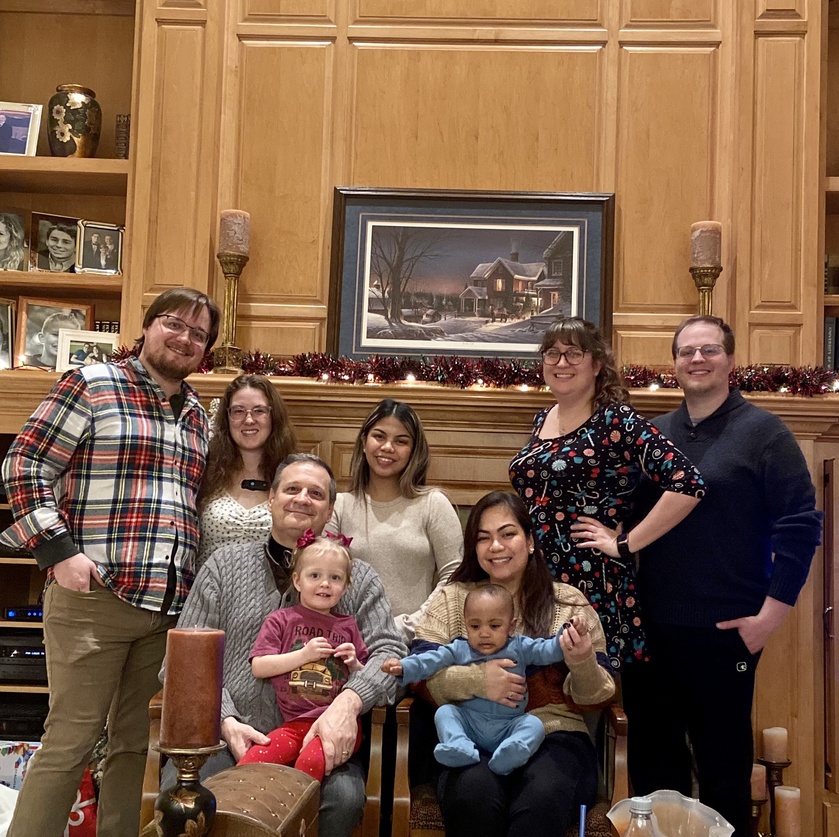Good morning! Today is the feast of St. John, one of Jesus' inner circle of disciples, and the author of the fourth gospel, the book of Revelation, and at least one of the three "Johannine" epistles in the New Testament. He's the only one of the apostles who was not martyred (there is a legend that they tried to boil him in oil, but unsuccessfully), and he lived the longest - into the second century. The title "the beloved disciple" doesn't mean that Jesus loved him more, it's a reference to the fact that he was the youngest disciple - it's like saying he was the most adorable disciple, or something like that.
On another note, we are back home, and very grateful for a great time with family, but also really glad to be home. Here's a picture of my "house" - across the back is my oldest son Rick, and his wife Jess, then our daughter Anjela, then my younger son John with his wife Shiann. I'm holding their daughter, Annabelle, and Tammy is holding Anjela's son Zach. Rick and Jess live in Wisconsin, and John, Shiann, and Annabelle live in Illinois. Anjela and Zach live with us, but Anjela's first boy Zeph is still in the Philippines, and we're waiting for his visa to be approved to come to the US. He's 4 years old. So even though we are are spread out, this is my household, and in the last several years I've become much more atuned to practicing a kind of prayer in which one includes one's loved ones - not only praying for them (for their benefit), but bringing them into the prayers by praying for them (i.e., on their behalf). In the same sort of way that Jesus died both for us, and for us (in our place), we can pray for our loved ones as though they were praying with us. This is the reason that virtually all early Christian prayers are we/us prayers, not I/me prayers.

I mentioned in The Journey that I wrote a song based on Isaiah 2, which is one of my favorite OT passages:
In days to come, the mountain of the Lord’s house
shall be established as the highest mountain, and raised above the hills.
All nations shall stream toward it. Many peoples shall come and say:
“Come, let us go up to the Lord’s mountain, to the house of the God of Jacob, That he may instruct us in his ways, and we may walk in his paths.” For from Zion shall go forth instruction, and the word of the Lord from Jerusalem.
He shall judge between the nations, and set terms for many peoples.
They shall beat their swords into plowshares, and their spears into pruning hooks; One nation shall not raise the sword against another, nor shall they train for war again. House of Jacob, come, let us walk in the light of the Lord!
I hope you like the song!












